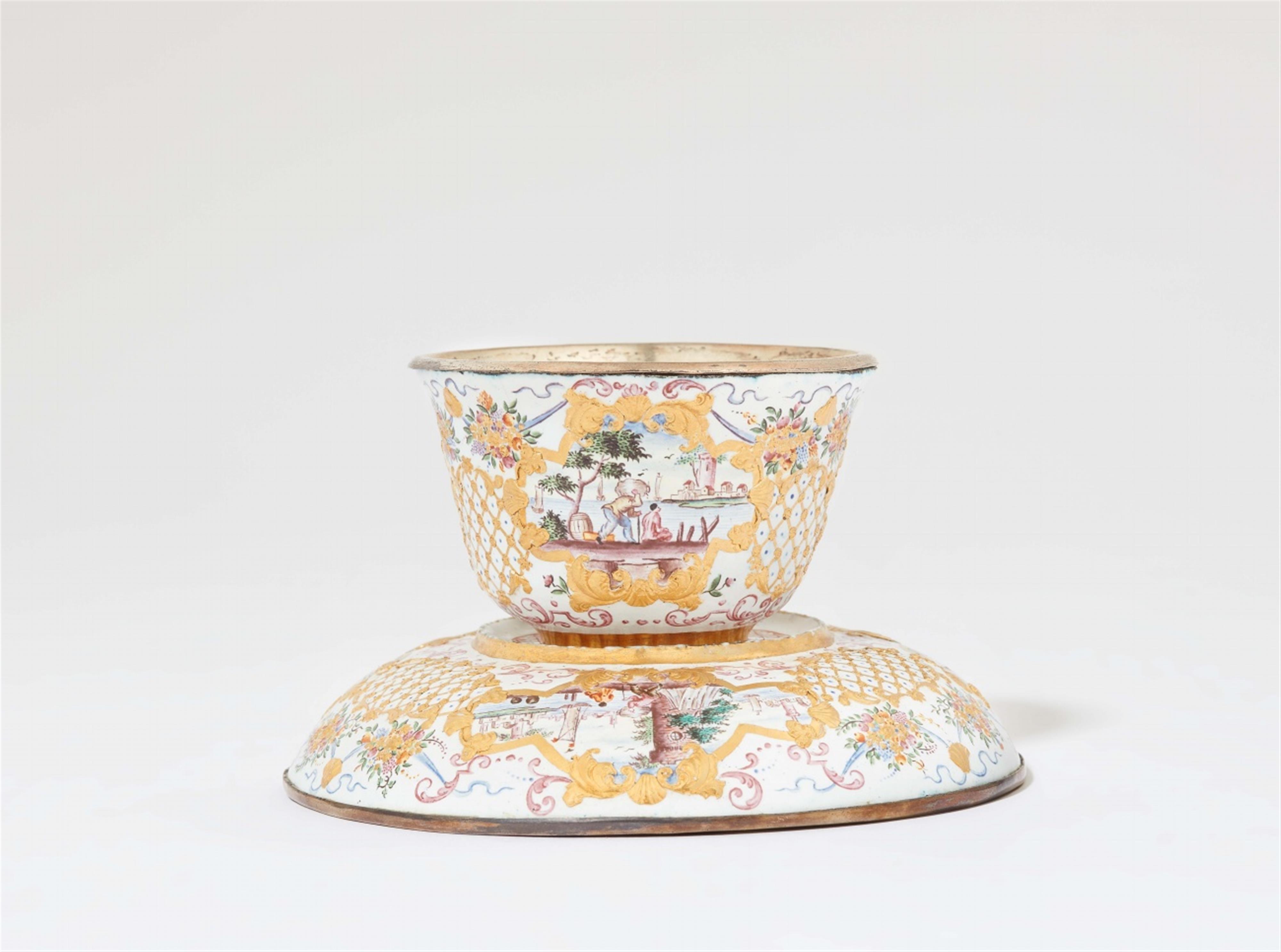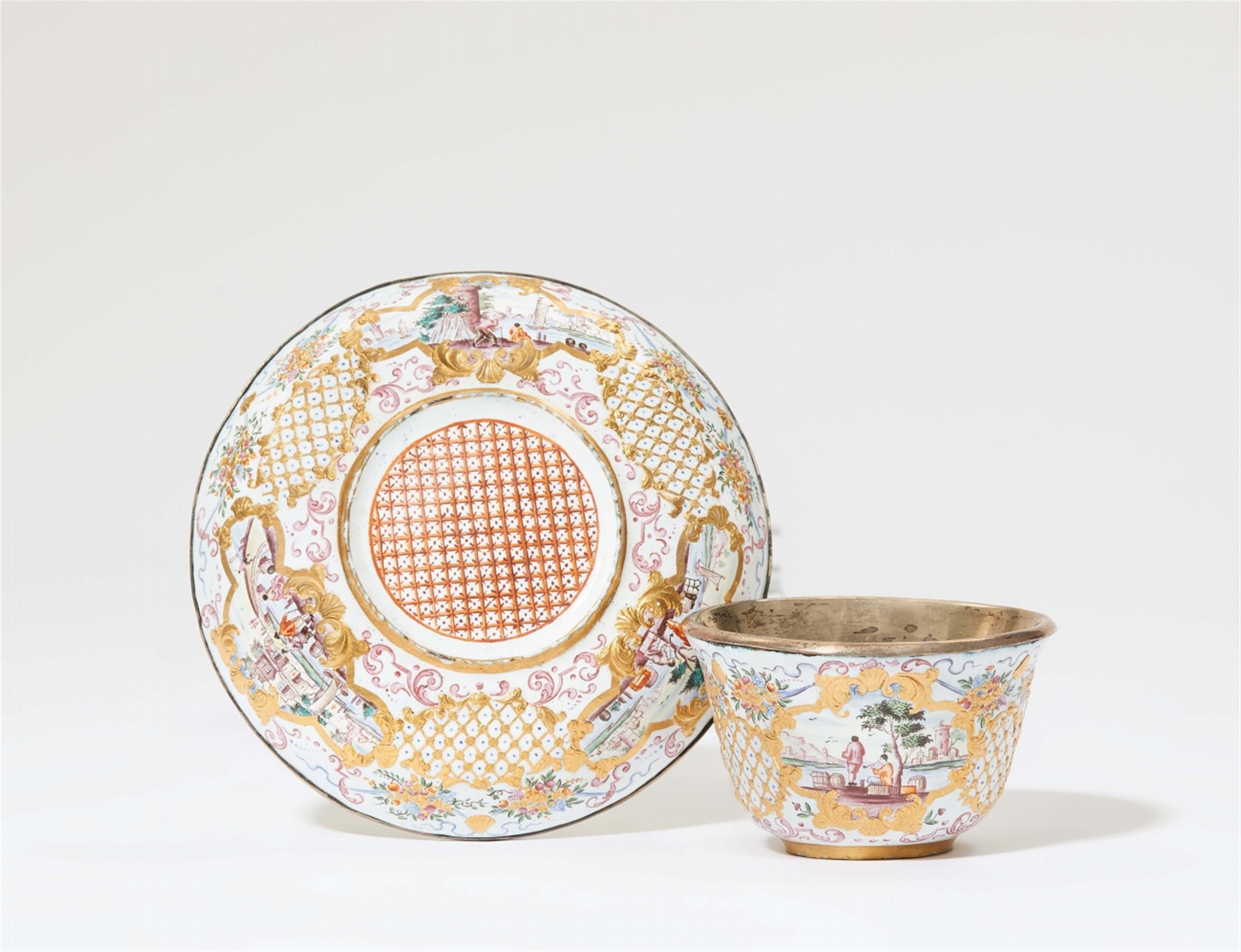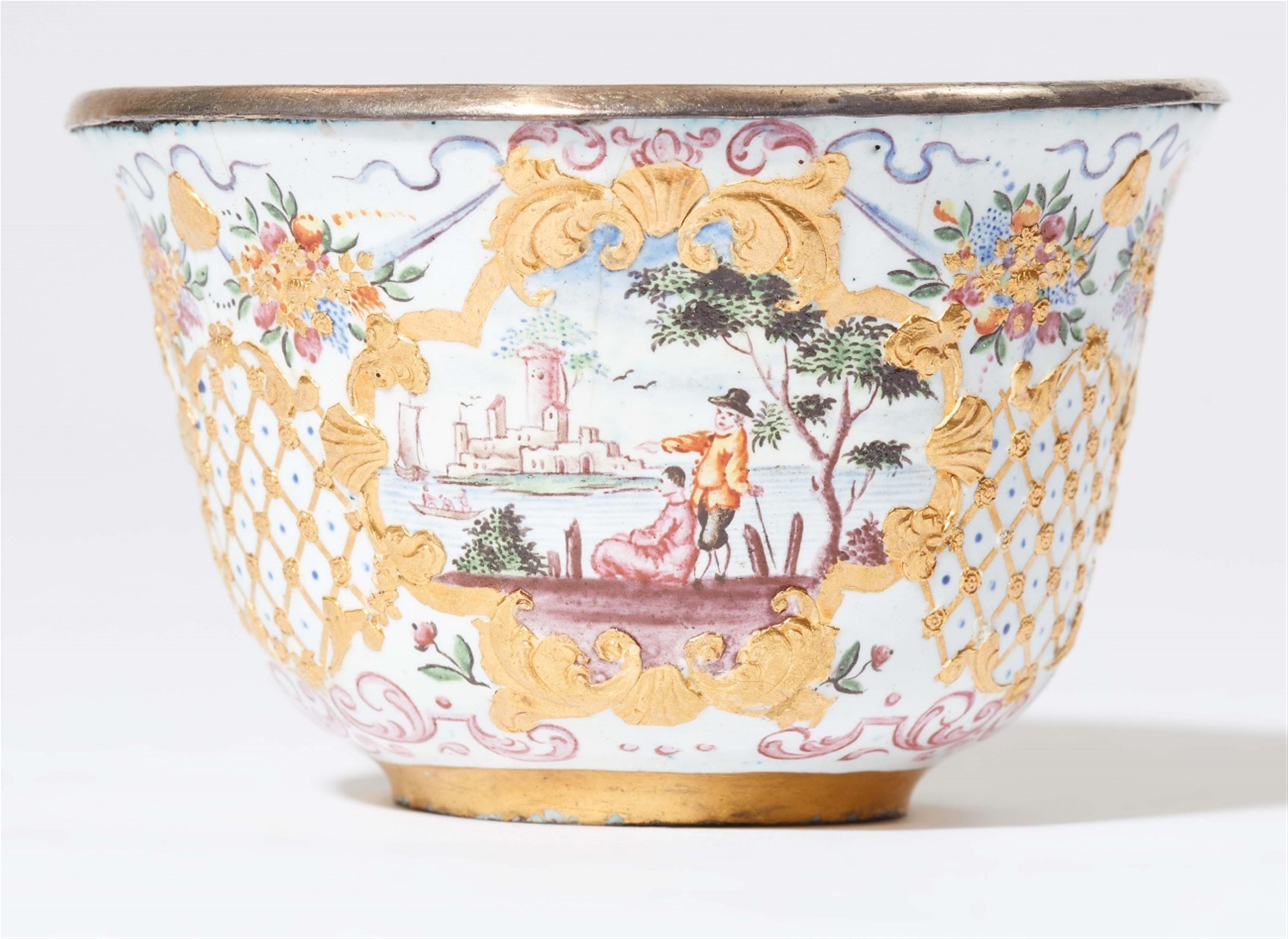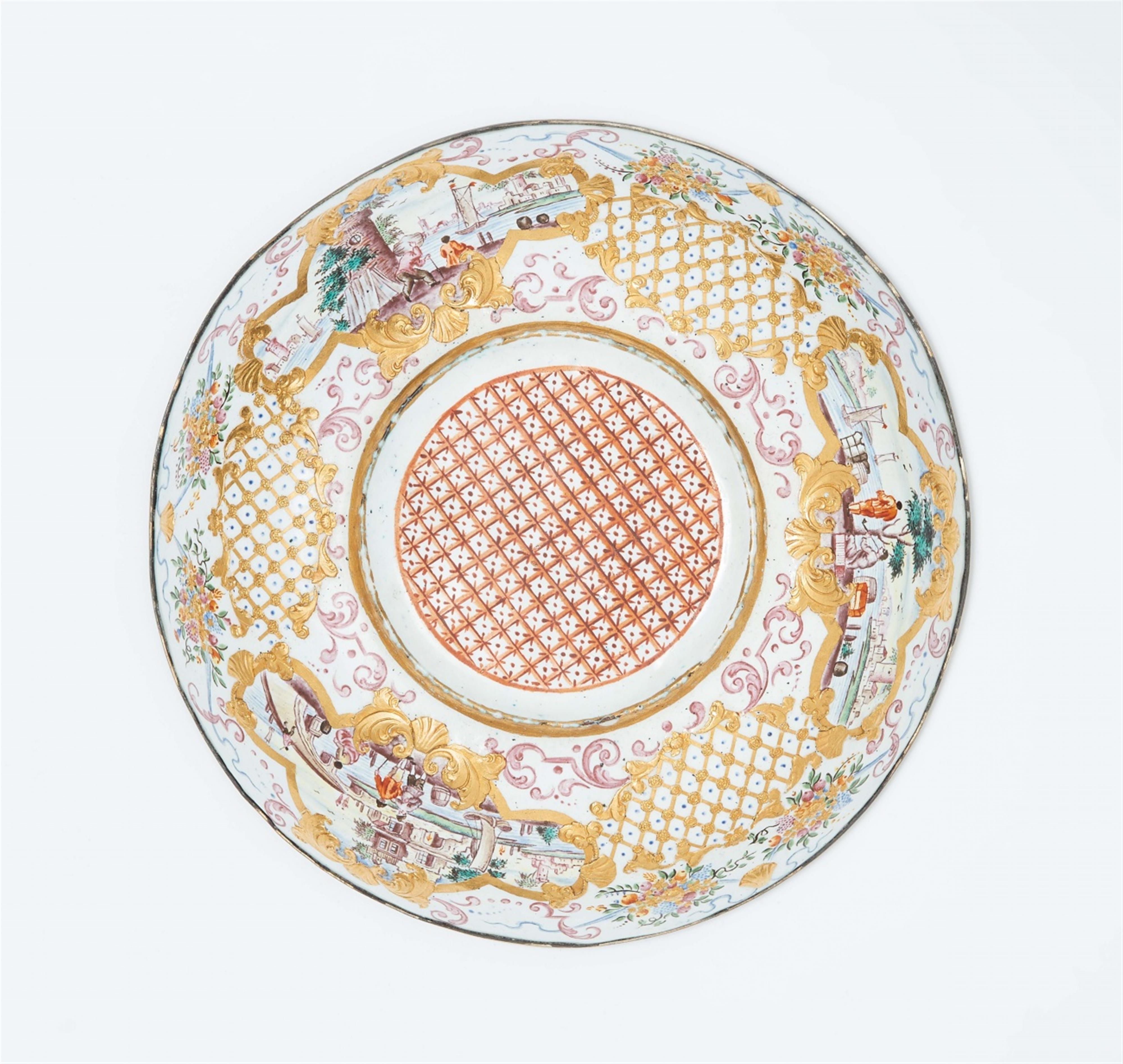An "émail de Saxe" tea bowl and saucer
Double-walled copper tea bowl decorated in enamels with merchant navy scenes in three gilt quatrefoil reserves, trellis pattern panels and a border of floral swags hanging from blue ribbons. The inner bowl entirely gilt, the well of the saucer with trompe l'oeil gilt trellis pattern decor. Unmarked. H tea bowl 4.34, D 7.3, D saucer 11.6 cm.
Berlin, workshop of Pierre and Alexander Fromery, decor attributed to Christian Friedrich Herold.
One of the most famous luxury products to be produced in Berlin in the 18th century was the so-called “émail de Saxe”. The invention of this special form of enamel paint goes back to the French-born Pierre Fromery (1655 - 1738), who was also active as an armour smith to the court. His fancy goods store also employed an especially talented young enamel painter from Berlin named Christian Friedrich Herold, who was born in around 1700. He was later employed as a journeyman at the prestigious new painting studio of the Meissen porcelain manufactory under Johann Gregorius Hoeroldt in 1725, and was already promoted to porcelain painter there on 8th January 1726. He first focussed on the repertoire of “Fine Japanese figures and landscapes” developed by Hoeroldt, but at the same time he developed his own specialist subject: the so-called “merchant navy scenes”. These compositions, which depict scenes of merchants in Southern European harbour towns, also decorate the present work. It was an obvious choice of motif, since Meissen produced numerous coffee, tea, and hot chocolate services for the European aristocracy, and the ingredients for these drinks were brought to Europe by ship from the colonies. Alongside working for Meissen, Christian Friedrich Herold continued working for Pierre Fromery and later for his son Alexander. This is documented in the findings of a search carried out at his apartment in Meissen in January 1737, in which works painted on copper were discovered. In 1744 he was also found guilty of stealing purple pigment, which he needed for the decoration of copper boxes, and punished with four weeks imprisonment. The term “émail de Saxe” for these products was presumably coined in France, but it may also have been invented by the Frenchman Pierre Fromery or his industrious son Alexander. However, it was Christian Friedrich Herold who gave the firm the right to bear this name.
Provenance
Acquired in 1993 from Hans H. Mischell, Cologne.
Private collection, Westphalia.
Literature
For more on "Email de Saxe" cf. Weinhold, Emailmalerei an Augsburger Goldschmiedearbeiten von 1650 - 1750, Munich-Berlin 2000, p. 157 ff., cat. no. 146 f.
An identical tea bowl and saucer formerly housed in the collection of Margarete Oppenheim (auctioned by Julius Böhler, Munich, 18th - 20th May 1936, lot 559, pl. 42, sold for 400 Reichsmark).
A further identical tea bowl and saucer is housed in the Metropolitan Museum of Art New York, acc. no. 64.101.393, 394 (Hackenbroch, Meissen and other Continental Porcelain. The Collection of Irwin Untermyer, Cambridge 1956, fig. 234).
For more on Herold, see: Rückert, Biographische Daten der Meißner Manufakturisten des 18. Jahrhunderts, Munich 1990, p. 156 f.








